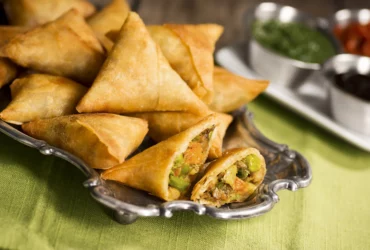Choosing Ingredients Wisely
Prioritize Freshness and Seasonality
When it comes to everyday cooking, choosing ingredients wisely can make all the difference in the quality and flavor of your dishes. One key aspect to consider is freshness, as using fresh produce, meats, and dairy products can elevate even the simplest recipes.
Freshness refers to the age and handling of the ingredient, with the goal being to use items that are as close to their natural state as possible. This means selecting produce that is firm, has no visible signs of spoilage, and has not been sitting on a shelf for weeks or months.
For example, when shopping for vegetables, look for bunches with crisp leaves, vibrant colors, and no wilted or yellowing leaves. For fruits, choose those that are heavy for their size, have a sweet aroma, and show no signs of bruising or soft spots.
In addition to freshness, seasonality is also crucial in everyday cooking. Seasonal produce is often fresher, tastier, and more affordable than out-of-season options, which may be picked before they’re ripe and shipped long distances to reach your local market.
Seasonality refers to the time of year when certain fruits and vegetables are at their peak ripeness. By cooking with seasonal ingredients, you can take advantage of the best flavors, textures, and aromas that each crop has to offer.
For instance, spring is a great time for asparagus, strawberries, and rhubarb, while summer is perfect for corn, tomatoes, and peppers. In the fall, look for apples, squash, and leafy greens like kale and spinach.
By choosing ingredients wisely and prioritizing freshness and seasonality, you’ll be able to create delicious, memorable meals that showcase the best of what’s available at your local market. Whether you’re cooking for one or a crowd, using high-quality ingredients will elevate even the simplest recipes into something truly special.
Incorporating seasonal produce into your everyday cooking can also help reduce waste and support local farmers by buying directly from them or shopping at community-supported agriculture (CSA) programs.
Selecting fresh and seasonal ingredients can elevate the taste, texture, and nutritional value of your dishes (USDA). When possible, opt for locally sourced produce to reduce carbon footprint.
When it comes to cooking, choosing the right ingredients can make all the difference between a mediocre meal and an exceptional one. The type and quality of ingredients used can impact not only the taste but also the texture and nutritional value of your dishes.
The United States Department of Agriculture (USDA) notes that selecting fresh and seasonal ingredients is key to elevating the flavor, texture, and nutritional value of your meals. Fresh produce is typically more flavorful and aromatic than its out-of-season counterpart, which has been transported long distances or stored for extended periods.
Benefits of Choosing Seasonal Ingredients
There are several benefits to choosing seasonal ingredients:
- Flavor: Seasonal produce tends to be more flavorful and aromatic due to the natural ripening process.
- Nutrition: Produce that’s in season is typically higher in vitamins, minerals, and antioxidants than out-of-season produce.
- Taste: Fresh ingredients can make a significant difference in the overall taste of your dishes.
Furthermore, choosing seasonal ingredients supports local farmers and reduces carbon emissions associated with transportation. By opting for locally sourced produce, you’re promoting sustainable agriculture and reducing your environmental footprint.
How to Choose Seasonal Ingredients Wisely
To make the most of seasonal ingredients, follow these tips:
- Check local farmer’s markets or join a community-supported agriculture (CSA) program: These are great resources for finding fresh, locally grown produce.
Read food labels carefully:
- If you’re shopping at a supermarket, look for ingredients that are labeled as “locally sourced” or “seasonal.”
Plan your meals around seasonal produce:
- Check what’s in season and plan your meals accordingly. This will ensure you’re using the freshest and most flavorful ingredients.
By following these tips and choosing seasonal ingredients wisely, you’ll not only elevate the taste and texture of your dishes but also contribute to a more sustainable food system.
Basic Cooking Techniques
Mastering Essential Skills
Cooking is an art that requires a combination of skills, techniques, and creativity. Mastering basic cooking techniques is essential for every home cook to create delicious meals with confidence.
Understanding Measurement
The first step in mastering basic cooking techniques is understanding measurement. This includes knowing the difference between dry and liquid measurements, as well as how to accurately measure ingredients using measuring cups, spoons, and scales.
Here are some key points to keep in mind:
- Dry Measurements: Use dry measuring cups for dry ingredients such as flour, sugar, and spices. Scoop the ingredient into the cup until it is level with the top.
- Liquid Measurements: Use liquid measuring cups for liquids such as water, oil, and milk. Place the measuring cup on a flat surface and read the measurement at eye-level.
Knife Skills
Knife skills are an essential part of cooking. Mastering basic knife cuts will make you more efficient in the kitchen and help you prepare ingredients with precision.
Here are some key points to keep in mind:
- Chopping: Hold the knife at a 45-degree angle and use a gentle rocking motion to chop through the ingredient. Use a cutting board for added safety.
- Dicing: Cut the ingredient into small, uniform cubes. This requires a bit more skill than chopping, but with practice, you’ll get the hang of it.
- Mincing: Cut the ingredient into tiny pieces using a gentle sawing motion. This is often used for herbs and spices.
Stovetop Techniques
The stovetop is where the magic happens in cooking. Mastering basic stovetop techniques will help you cook food evenly and prevent accidents.
Here are some key points to keep in mind:
- Searing: Heat a pan over high heat until it reaches the desired temperature. Add oil or butter, then carefully add the ingredients to be seared.
- Sautéing: Cook food quickly in a hot pan with some oil or butter. Stir constantly to prevent burning.
Oven Techniques
The oven is a great way to cook food evenly and consistently. Mastering basic oven techniques will help you achieve perfect results every time.
Here are some key points to keep in mind:
- Roasting: Cook food in the oven using dry heat. This is often used for meats, vegetables, and root vegetables.
- Baking: Cook food in the oven using moist heat. This is often used for breads, cakes, and pastries.
Cooking Methods
Cooking methods refer to the way food is cooked. Mastering basic cooking methods will help you create a variety of dishes with ease.
Here are some key points to keep in mind:
- Boiling: Cook food in boiling water until it reaches the desired tenderness.
- Steaming: Cook food using steam. This is a great way to preserve nutrients and flavor.
Timing and Temperature Control
Mastering timing and temperature control is essential for cooking food perfectly every time.
Here are some key points to keep in mind:
- Use a timer: Set a timer to ensure you don’t overcook or undercook your food.
- Check the internal temperature: Use a thermometer to check the internal temperature of the food. This will help you determine if it’s cooked through.
By mastering these basic cooking techniques, you’ll be well on your way to becoming a confident and skilled home cook.
Familiarize yourself with fundamental techniques such as sautéing, roasting, steaming, and boiling (Harvard School of Public Health). Practice these methods to develop muscle memory and achieve consistent results.
Mastering basic cooking techniques is essential for anyone who wants to cook with confidence and efficiency. These fundamental methods are the building blocks of any successful dish, and understanding how to execute them correctly will enable you to create a wide range of delicious meals.
Familiarize yourself with sautéing, which involves quickly cooking ingredients in a pan with some oil or fat over medium-high heat. This technique is great for cooking vegetables, proteins, and starches, and can be used to make everything from stir-fries to sauces. To sauté effectively, use a hot pan, add a small amount of oil, and cook your ingredients rapidly while stirring constantly.
Roasting involves cooking ingredients in the oven using dry heat, which brings out their natural flavors and textures. This technique is perfect for cooking meats, vegetables, and root vegetables, and can be used to make everything from roasted chicken to Brussels sprouts. To roast effectively, preheat your oven to a high temperature, season your ingredients generously, and cook them until they’re tender and caramelized.
Steaming is a moist-heat cooking method that’s great for cooking delicate ingredients like fish, vegetables, and tofu. This technique helps retain the nutrients and flavors of your ingredients, making it an excellent choice for healthy cooking. To steam effectively, fill a pot with water, bring it to a boil, then reduce the heat and place a steamer basket over the water.
Boiling is another moist-heat cooking method that’s perfect for cooking pasta, rice, and other grains. This technique is easy to master and can be used to cook a variety of ingredients quickly and efficiently. To boil effectively, fill a pot with water, bring it to a boil, then add your ingredients and cook until they’re tender.
The key to mastering these basic cooking techniques is practice. The more you cook, the more comfortable you’ll become with each method, and the more confident you’ll feel in the kitchen. So don’t be afraid to experiment and try new things – with time and practice, you’ll develop the skills and muscle memory needed to cook like a pro.
Remember, cooking is all about technique, and mastering these fundamental methods will give you the foundation you need to create delicious meals every day. So take the time to learn and practice these techniques, and you’ll be well on your way to becoming a skilled cook in no time!
Meal Planning and Time Management
Streamlining Your Cooking Routine
Meal planning and time management are essential skills for streamlining your cooking routine and making everyday cooking more efficient.
To start, set a goal to plan out your meals for the next 7-10 days in advance. This will help you avoid last-minute takeout or fast food runs, save money on groceries, and ensure that you’re preparing healthy and balanced meals.
Create a calendar or planner specifically for meal planning, where you can write down each day’s meals, ingredients needed, and any special dietary restrictions or preferences.
Meal Planning Tips
- Plan around your schedule: Consider how much time you have available to cook each day and plan meals accordingly. If you have a busy week ahead, opt for quicker meals like one-pot wonders or slow cooker recipes.
- Shop sales and seasonal produce: Plan meals that incorporate ingredients on sale or in season, which can help reduce food waste and save you money.
- Vary your protein sources: Include a mix of meat, poultry, fish, beans, lentils, and eggs to ensure a balanced diet.
When it comes to time management during cooking, consider the following tips:
Time Management Tips
- Prioritize prep work: Chop vegetables, marinate meats, or mix dressings ahead of time to save time during actual cooking.
- Cook in batches: Prepare multiple meals at once, such as a big batch of rice or roasted vegetables that can be used throughout the week.
- Use a “cook and freeze” system: Cook proteins like chicken, beef, or lentils, then freeze them for future meals. This saves time during cooking and ensures you always have healthy protein on hand.
By implementing these meal planning and time management strategies, you can streamline your cooking routine and enjoy the benefits of efficient and stress-free everyday cooking.
Create a meal plan to reduce food waste and save time during the week. Allocate specific days for grocery shopping, prep work, and cooking (Academy of Nutrition and Dietetics). Consider your schedule and energy levels when deciding on recipes and cooking methods.
Creating a meal plan that reduces food waste and saves time during the week involves careful planning, allocation of tasks, and consideration of energy levels.
The first step is to identify the recipes to include in your meal plan, taking into account personal preferences, dietary requirements, and cooking methods. The Academy of Nutrition and Dietetics recommends selecting recipes that can be made in advance, such as soups, stews, and casseroles, which can be reheated throughout the week.
Another key aspect is planning your grocery shopping, prep work, and cooking schedules. Allocate specific days for each task, such as:
- Monday: Grocery shopping day, where you purchase all the necessary ingredients for the week’s meals.
- Tuesday to Thursday: Prep work days, where you chop vegetables, marinate meats, and assemble salads or meal prep containers in advance.
- Friday: Cooking day, where you cook most of the meals for the weekend and Monday morning.
- Saturday and Sunday: These can be used for leftovers, reheating, and cooking smaller meals, such as omelets or grilled meats.
When deciding on recipes and cooking methods, consider your schedule and energy levels. Choose recipes that require minimal preparation time and effort, such as one-pot wonders or sheet pan dinners, which are quick to prepare and cook.
Incorporating meal prep into your routine can also save time during the week. Consider setting aside 30 minutes each weekend to chop vegetables, assemble salads, or cook proteins like chicken or beans in advance.
Some additional tips to reduce food waste include:
- Storing leftovers properly: Label and date leftover containers to ensure they are used within a day or two.
- Using up every part of an ingredient: Use vegetable scraps to make stocks or soups, and use meat bones for broth.
- Making small meals: Cook smaller portions to avoid food going bad before it can be consumed.
- Freezing leftovers: Freeze cooked meals like casseroles, stews, or individual portions of rice or vegetables for future meals.
- Best Lusha Alternatives for 2025 - April 22, 2025
- Best Overloop Alternatives for 2025 - April 22, 2025
- Best 6sense Alternatives for 2025 - April 22, 2025















